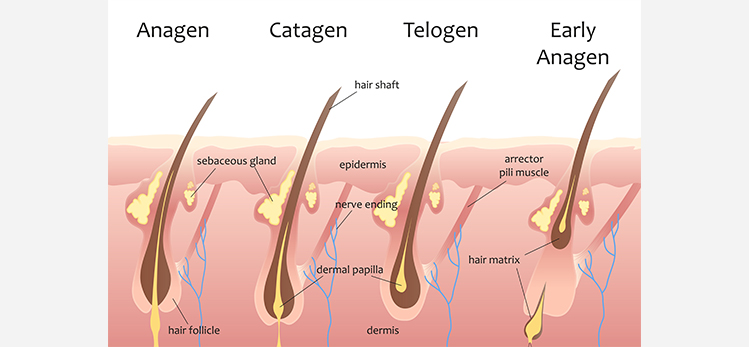Hair Growth Cycle - Stages Of Hair Growth
Hair is an interesting part of the human body. In fact, not everyone knows that it is comprised of dead protein cells called Keratin. Hair is a collection of keratin anchored onto the skin with a bulb right inside the hair follicle. Inside the bulb, there are live cells that are continuously dividing to produce more keratin, which gets pushed out of the follicle and is noticeable as hair growth.
One of the factors that impact hair growth is the level of hormones. Thus for males and females, the quality and nature of hair growth are different. The color of the hair is dependent on the melanin composition inside the follicle of a person - which defines how black or brown the hair strand will be.
Structure of Human Hair
Human hair has three distinct parts which contribute to its exterior. Let us discuss that now.
The first follicles- Follicles are formed on the body even before humans are born. The developing fetus inside its mothers body forms follicles at week 22. This is where all the follicles a human will ever possess are formed on the body, since for the remaining course of life, there is no new follicle formation.
Hair follicle- This is a bulb-like structure that is present in two layers of the skin - the epidermis and dermis. It is nourished by papilla, which carries blood vessels. Beside the follicle and a little above it in the layer of skin, there is a sebaceous gland that secretes sebum that conditions and protects the hair.
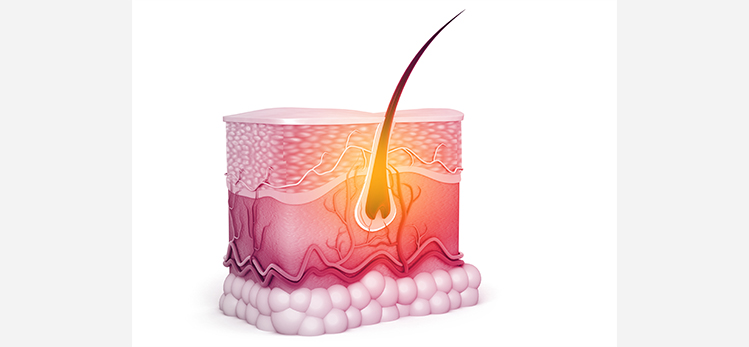
Hair Shaft- Human hair has a three-layered structure. The outer layer is called the cuticle, the middle layer is called the cortex, and the inner layer is called medulla. Out of the three, cuticle forms the major part and looks like a shingled roof in microscopic view.
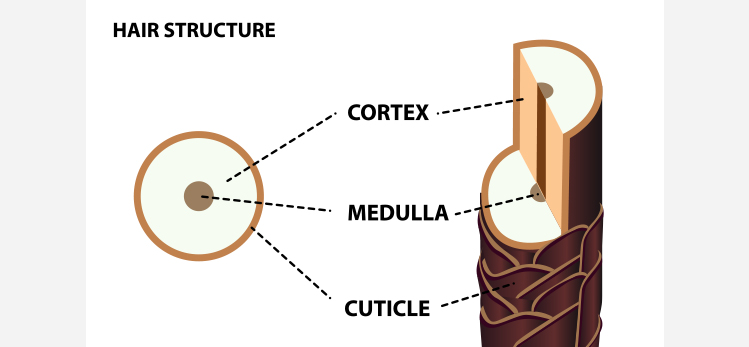
Anagen
This is the most active stage of hair growth wherein the cells inside the bulb are rapidly dividing. The process of cell division results in formation of new keratin length, which causes the dead keratin portion upwards and outwards of the follicle. It is this process that results in the length gain of the hair. The anagen stage is all about growing hair longer. On an average, the length that your hair gains in the anagen stage is approximately 1 cm in every 28 days.
Catagen
The Catagen phase is also called the transitional phase of hair growth. During this phase, your hair is not growing. The follicles shrink, and the bulb separates from the follicle but the hair still remains attached to it. At any given time, about 3% of the hair on your scalp is said to be in the Catagen phase. This phase has been observed to last for about three weeks.
Telogen
The telogen phase accounts for almost 8% of all the hair on your scalp at any given time. This is the phase when the follicles on your head are resting, therefore not producing any new hair or dividing any cells. The hair shedding that you observe - about 50 to 100 strands a day - is the hair that is in telogen stage. If you notice the shed hair, you will find a hard, white bulb at the end, which signifies that that hair fell during its telogen phase.
Hair loss is a phenomenon that disturbs the durations of this cycle on your scalp, causing higher shedding and lower rate of growth. Understanding the stages of hair growth greatly helps create targeted hair loss solutions that are effective.
It is not surprising that there is a cycle of hair growth in the human body - understanding this cycle helps you understand how to maintain hair health. Consuming ample amounts of protein, getting regular head massages to improve blood flow to the follicles, maintaining a good sleep cycle - all of this helps to keep the follicles on your scalp healthy and functioning optimally. This is the best way to ensure hair health stays good for a longer time.
However, if you are experiencing unprecedented shedding, it is best to visit a dermatologist for an accurate diagnosis.
Myth Busters HairFall
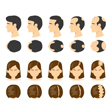
Androgenetic Alopecia - Everything You Need To Know
Have you been experiencing excessive hair fall over a prolonged period of time? It could be an early sign of androgenetic alopecia. It is a hair loss disorder common in both genders and can lead to progressive thinning and even baldness in some patients if not caught and treated early.

How To Make Hair Grow Faster For Men
A head full of healthy hair is a matter of confidence. Hair has its own mechanism of growing and shedding, and it is when this mechanism is thrown off that growth is hindered. Especially in the case of males, hair growth faces a lot of hiccups that can easily be managed.
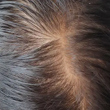
Female Pattern Baldness - Causes & Treatments
Have you suddenly noticed an increase in the number of hair strands on your pillow in the morning? Or is your ponytail getting thinner by day? Well, you might be suffering from female pattern baldness. While that does sound scary, identifying it early on is key to treating this condition effectively. So keep reading to know what this is, how you can identify it, and most importantly, what treatments you can avail of to get your beautiful lustrous hair back.
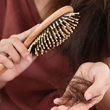
What Are The Reasons For Hairfall?
Almost everyone experiences some amount of hair thinning over the years. Shedding around 50 to 100 single strands of hair per day is considered normal. However, losing more than 150 strands a day, experiencing sudden thinning, or developing circular bald patches on your scalp are reasons for concern. Hair loss occurs when new hair doesn’t grow fast enough to replace the amount of hair you lose daily. Hair can fall due to various reasons, with hereditary hair loss and poor nutrition being the most common hair fall reasons.

Expert Approved Tips For Hair Growth
What can be more debilitating than seeing hundreds of hair strands shedding from your scalp every time you brush your hair? Also, excessive molting occurs during seasonal changes that can be very stressful for you. Although it’s okay to lose between 50-100 strands every day, according to the American Academy of Dermatology, the problem occurs when you start shedding more than normal. But that doesn’t mean you have to feel helpless as there are ways to grow your hair back. Even if you are coping with baldness or alopecia, certain hair growth tips from dermatologists can come to your rescue. Read on to discover how these tips can be your savior when abnormal hair fall problems are in sight.
Trending Videos
+ 3 Sources
LMRC - GGI-CO-A2-DMA-300026127-300026127-WM-J21-282
© 2021 Dr. Reddy’s Laboratories Ltd. All rights reserved.
